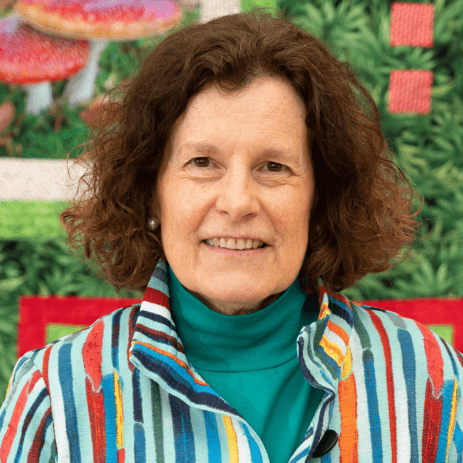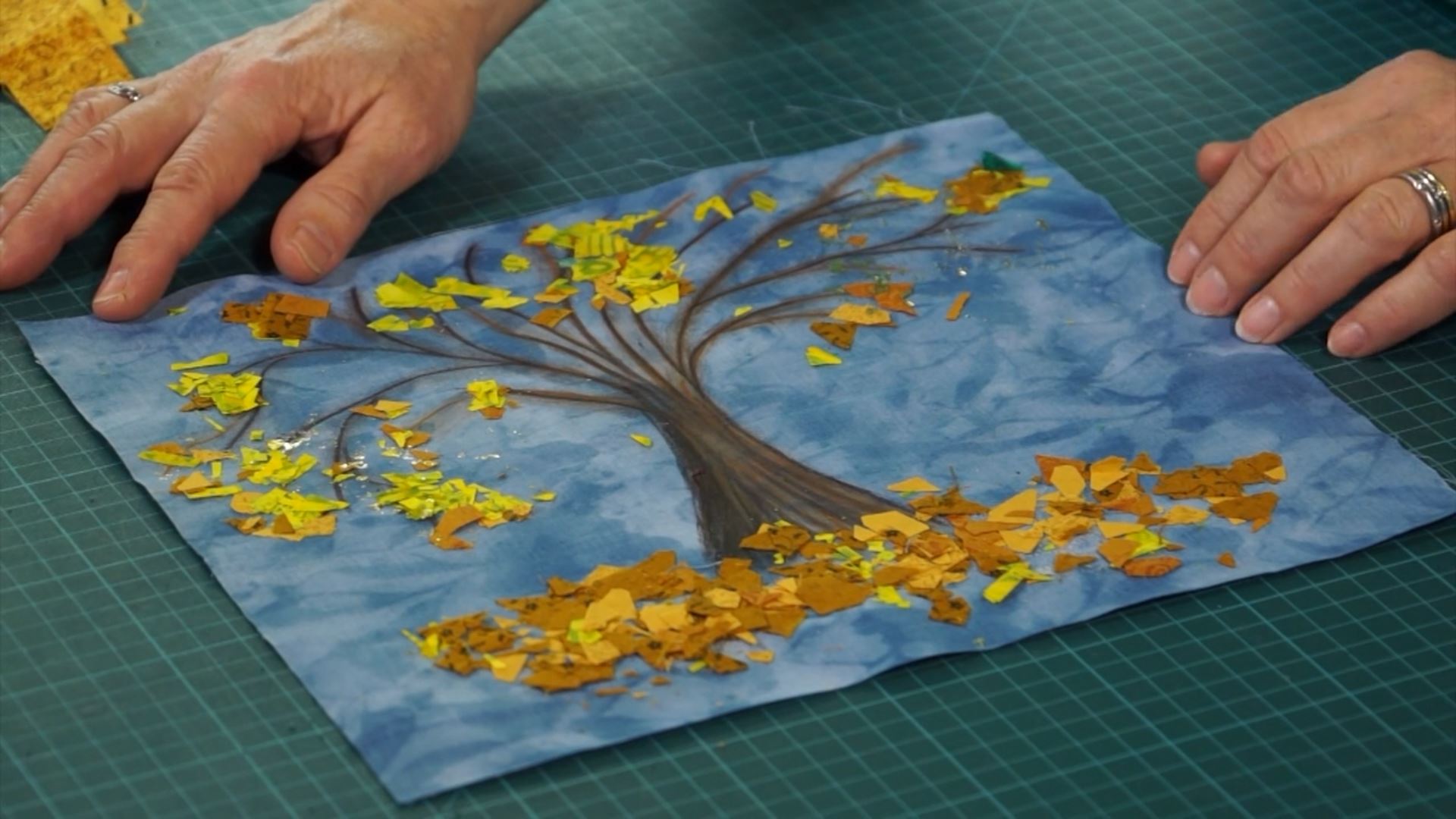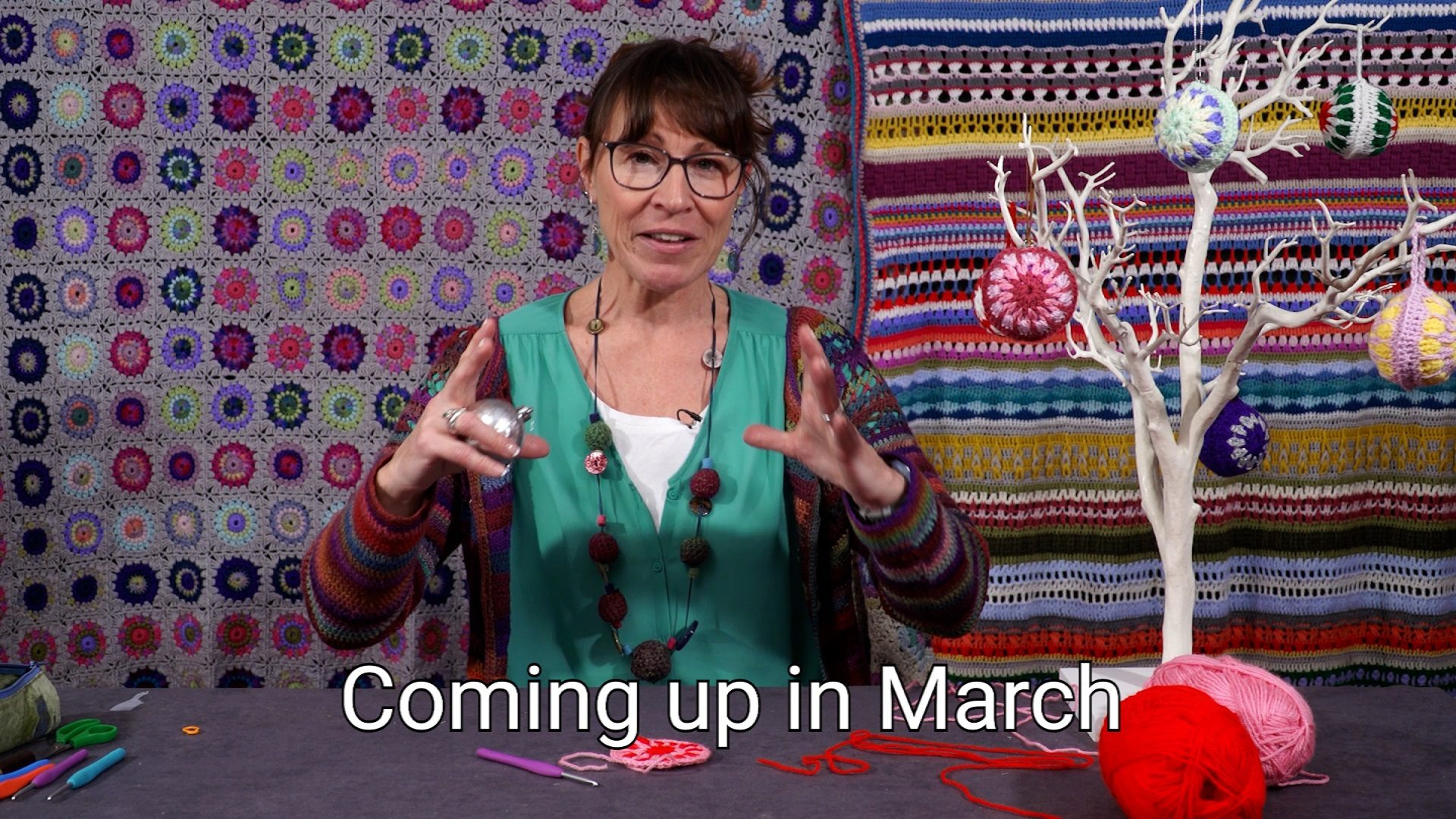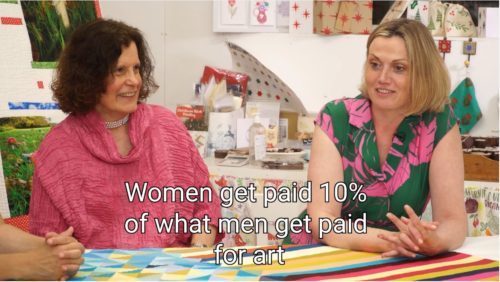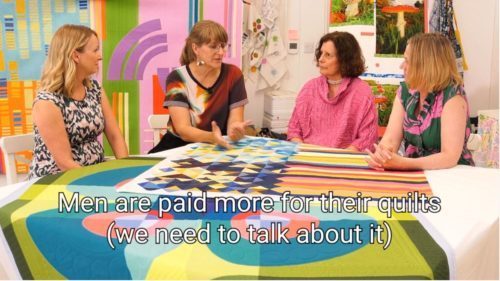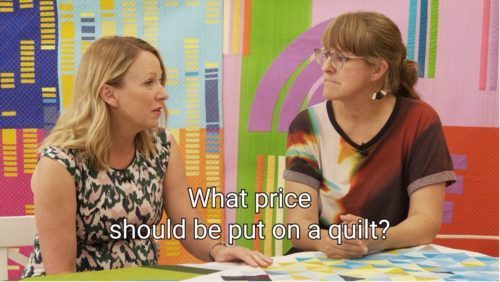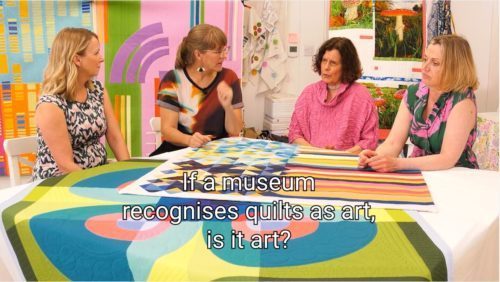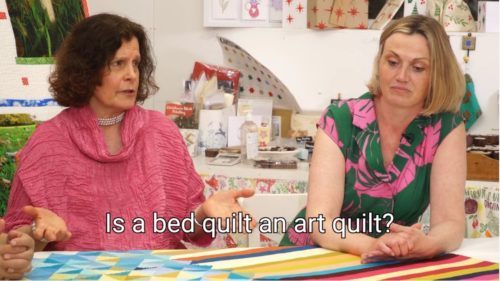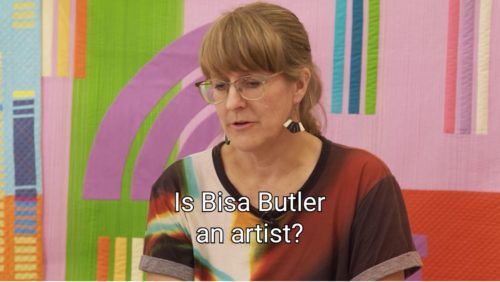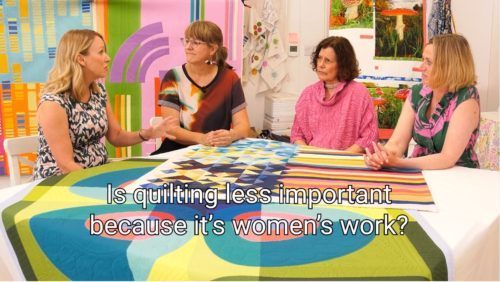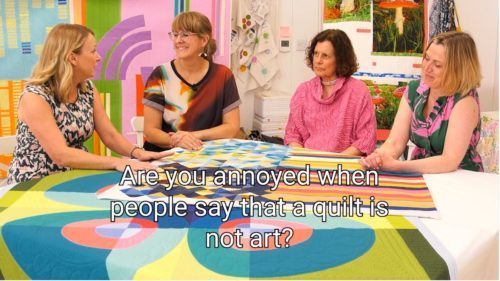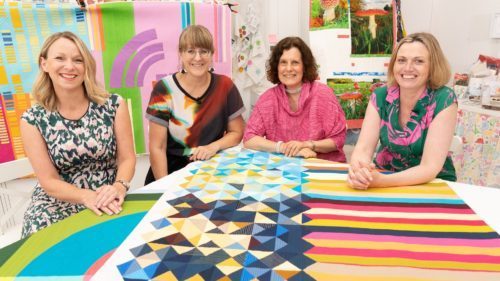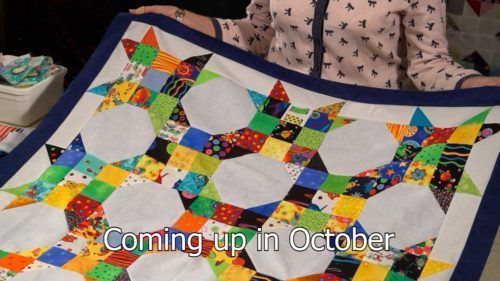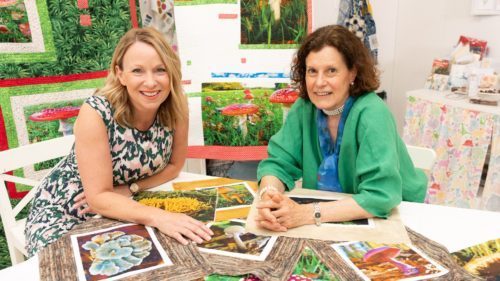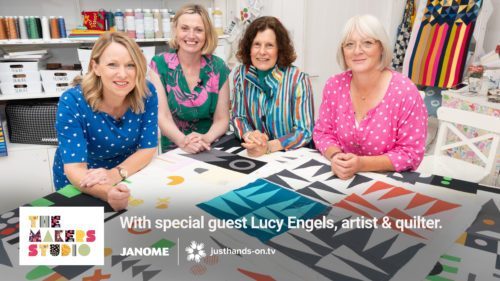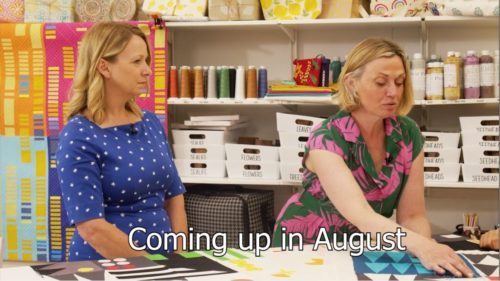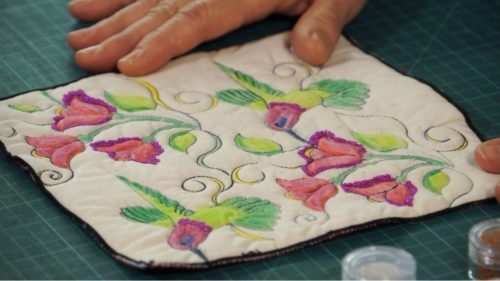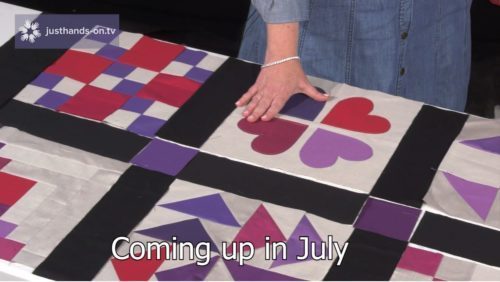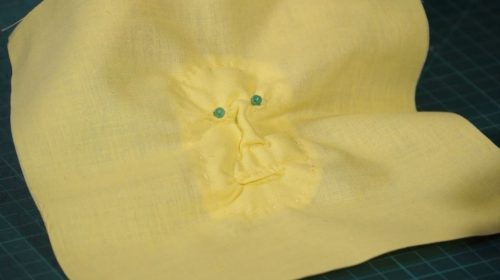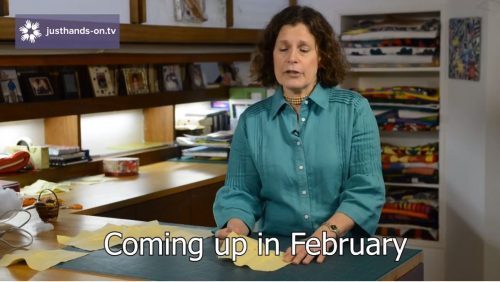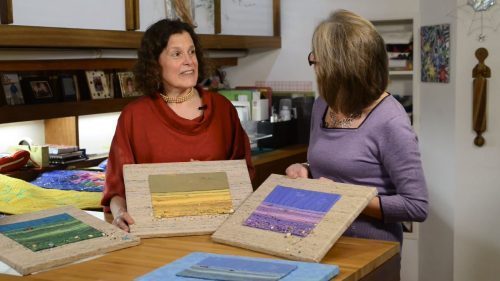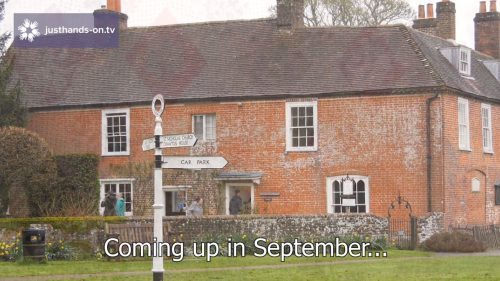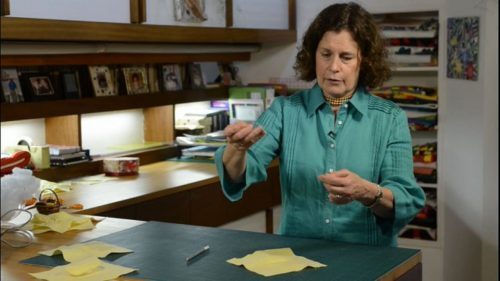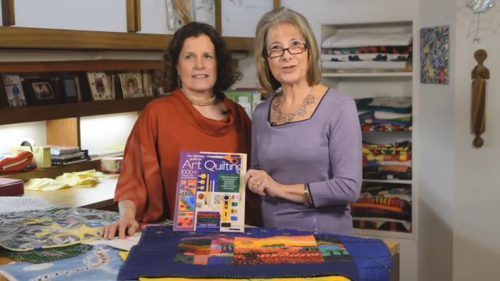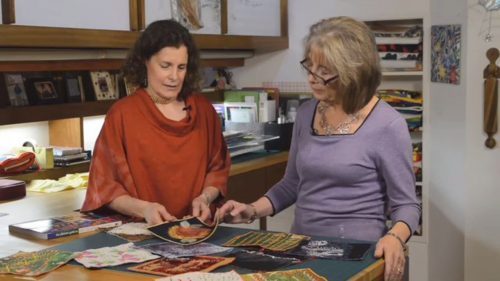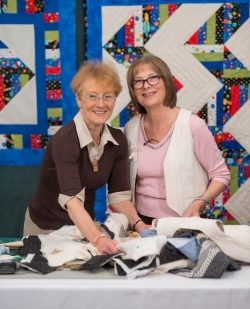About Linda
Linda Seward is an experienced quilter, writer, lecturer, and quilt judge.
Linda’s been doing needlework ever since she learned to hold a needle. She was taught to embroider by her mother and to knit and crochet by her grandmothers. She began to sew her own clothes at the age of 10, but didn’t begin making quilts until she was in her 20s.
Linda attended Livingston College (Rutgers University) where she earned an Anthropology Degree, then switched to Douglas College where she received a Home Economics degree in clothing, textiles, and design. She studied fashion in New York City at Tobe-Coburn School for Fashion Careers before working as a needlework and crafts editor in both America and England. She taught herself the basics of quilting while working as an editor for McCall’s Needlework & Crafts Magazine in New York City. After that, although she edited dozens of books on all types of needlework and crafts for Dover Publications in New York, Linda always felt that she would rather be quilting.
Linda has written twelve books about her favourite subject, quilting, including The Complete Book of Patchwork, Quilting and Appliqué , which has been used as a source book for the British City & Guilds Patchwork & Quilting course and has sold over a quarter of a million copies in several languages. It has recently been updated and reprinted by Search Press. Linda’s latest book, entitled The Ultimate Guide to Art Quilting, is published by Sixth&Spring, New York. She has also published books on puppies, babies, crochet, knitting, and general crafts (under her maiden name, Linda Macho).
Linda has appeared on television and radio shows, and has judged numerous quilt shows around the world. She had a regular column in The Quilter magazine for 20 years, and works now as a freelance writer and photographer as well as being a quilter, of course!
Linda found a new obsession in lockdown during her daily walks: nature photography. According to Linda, “I realised that I didn’t know much about the natural world and resolved to teach myself as much as I could through photography and research. This lockdown project turned into a new obsession as I continue to learn about all aspects of nature from plants, lichens insects, birds and animals to fungi and even slime moulds.”
Linda lives in London and Oxfordshire with her husband and two Border Terriers.
Signature Technique
Art Quilting
Top Tips
- One of the best ways to expose yourself to new techniques is to take a workshop with an expert.
- Add aloe vera gel to heighten the colour of inktense pencils.
- Use confetti fabric and glue granules to get a wonderful confetti applique effect.
- Add a little sparkle to your project with printer foil (make sure that you iron colour side up!).
- Use a silicone pressing sheet to keep your iron clear.
- Give the viewer a gentle surprise by adding soft sculpture faces in your quilt.
Videos
Patterns
Posts
Printing images onto fabric
I wish to make a cot quilt for my expected grandchild and would like to make some of the squares personalised by printing images from my computer onto the fabric. I see there are several methods of achieving this and wonder if in your experience you could recommend a tried and tested way. As this is for a baby, it will obviously be subjected to washing so the method needs to produce waterproof squares Answer: As far as I am aware the fabrics that have been designed to go through your printer for use with your computer work well - and I am not aware that the brand makes any difference. These should be readily available from your quilt shop (or www.creativequilting.co.uk).
You could also use a method which uses fixing ink - but that is a little messier - but used by the textile girls a lot and I think produced by a company called Electric Quilt (who design computere software) and I know is stocked by The Cotton Patch and possibly Art Van Go as well as they are great suppliers of all things required by textile artists.
Does the Microtak gun make holes in the quilt?
Well its a yes and a no; the original gun did have HUGE tags that made really nasty holes and I refused to use or stock them (I owned a quilt shop at the time); however the current generation has a much smaller needle and tiny tags which hold the layers better since we have moved to flatter wadding and don't make holes in the fabric. I use them all the time and despite having several 000 in each box seem to be constantly running out!!!!
TIP: do invest in a tack remover as well as this will keep your quilt safe from little snips from your scissors and also stop you being tempted to use your best scissors to remove them (and spoil your scissors) NB: all these products are in the shop
Another great filming day with Jennie Rayment
From bunting to pincushions; waistcoats to neck bands; Serging to Pineapples - we had a great day and Jennie as always was on good form; lots of great content for the site - you will just have to keep watching!

